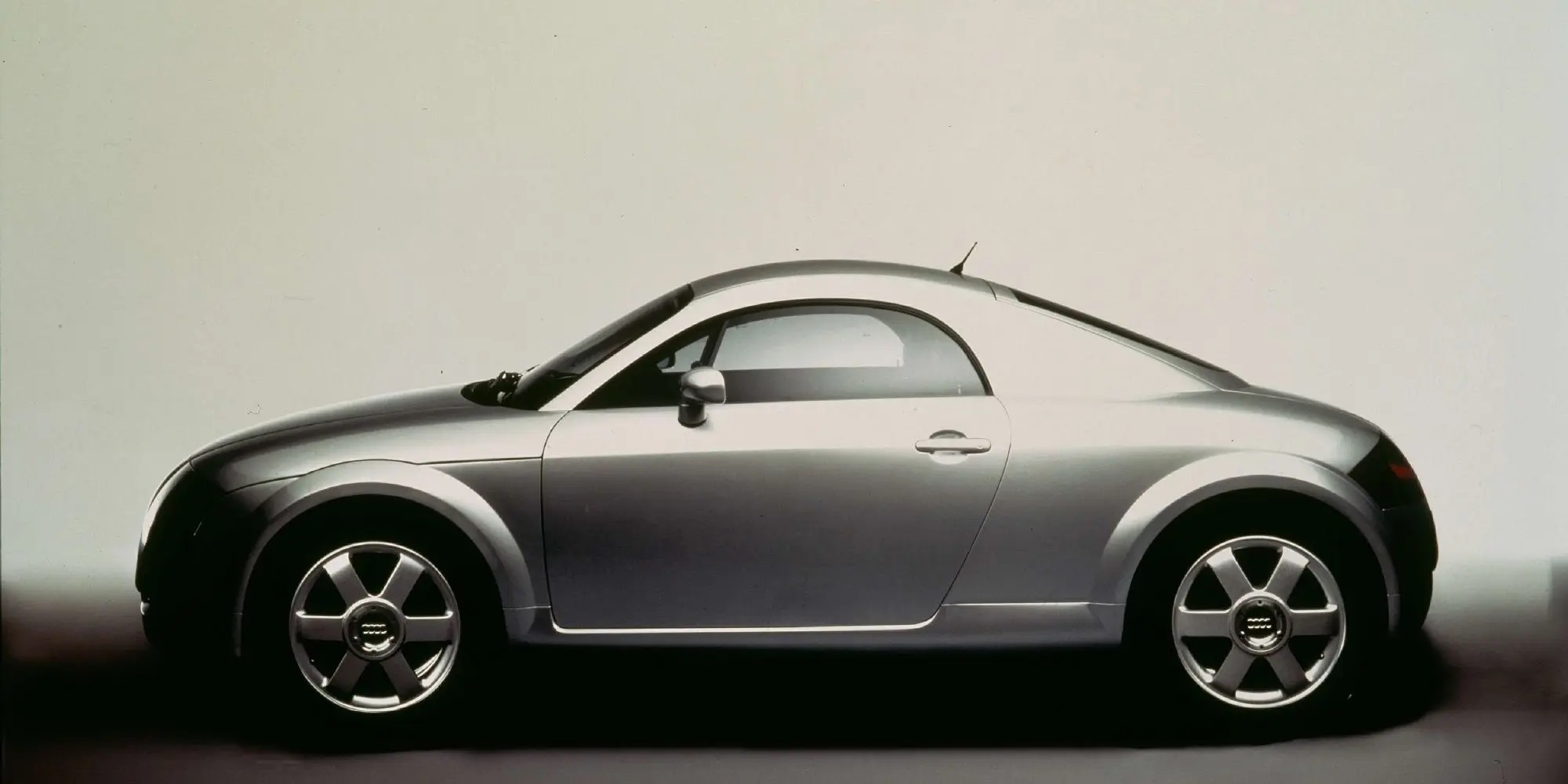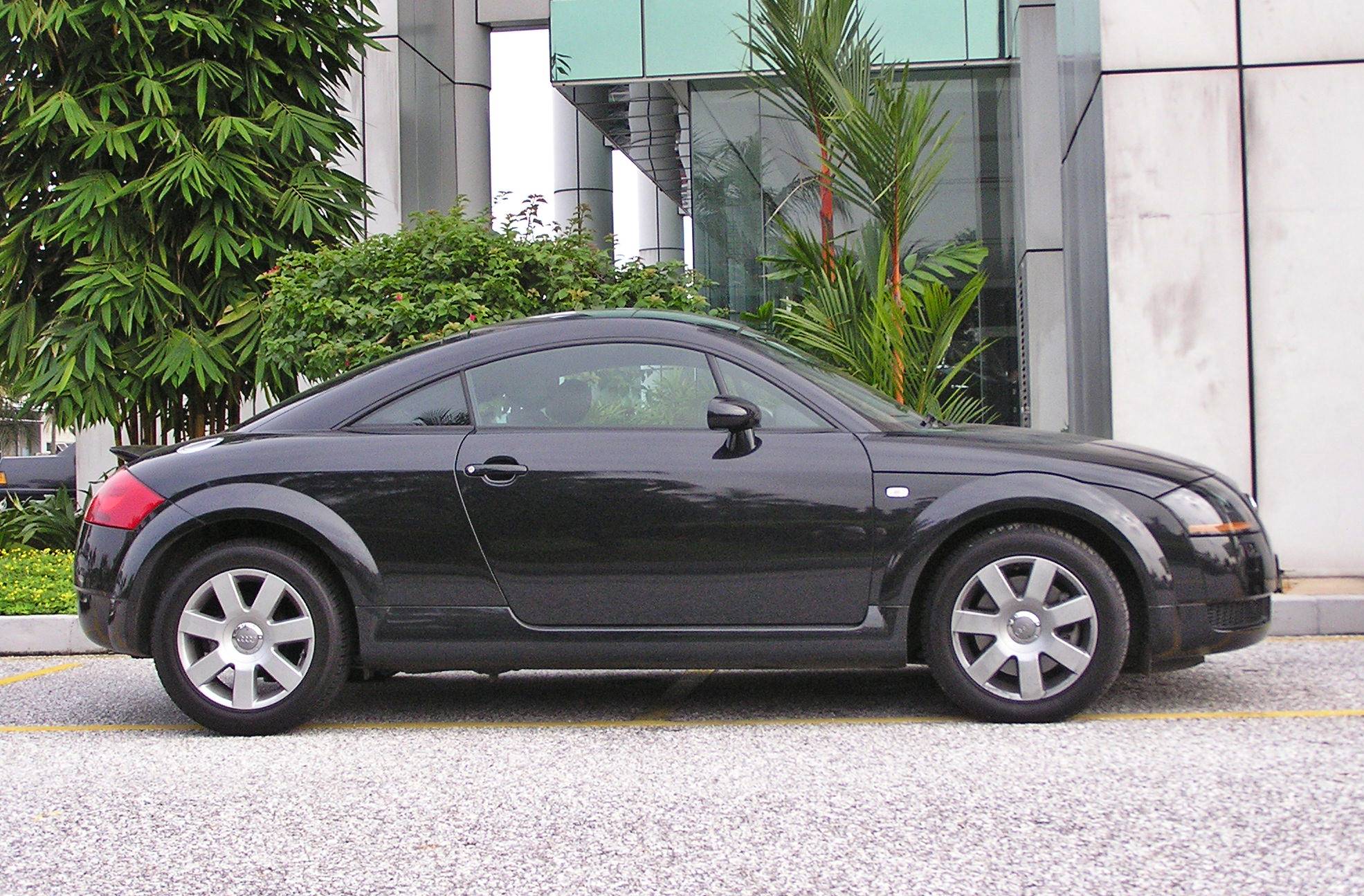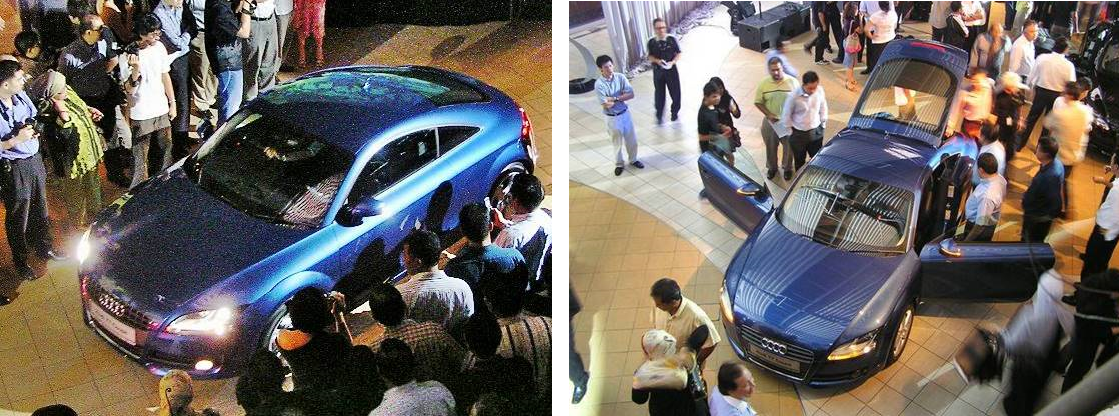The Audi TT celebrates its 25th anniversary this year and sadly, it is also the year that production of the Coupe and Roadster models will end. A pivotal model for the German carmaker in the 1990s, the TT was a sensation when the original design study was displayed in 1995. Three years later, after the design was refined minimally, it went into production and became an overnight sensation. It would be one of the key catalysts behind the transformation the brand.


Conceived by American designer Freeman Thomas, under the then Head of Design Peter Schreyer, the design study model was minimalist, its geometric form evoking the principles of Bauhaus design. It was a ‘less is more’ approach in which every line has a purpose, and every shape a function.
Distinct and unique design
The design then (and even now) set it apart from contemporary production models, and it was complemented by an imaginatively designed cabin which carried that geometric theme through into everything from its switchgear and air vents to its many details in milled aluminium.

This completely new departure from the familiar features that defined Audi design wasn’t, of course, the only exception to the rule. When the design study was revealed, Audi was already in the process of strengthening its ongoing transformation with a completely new naming convention for its models in each segment, starting with the successors to its compact executive class 80, executive class 100 and luxury class V8 Saloon, which launched as the A4, A6 and A8, respectively.

Named after the Isle of Man TT
But the new Audi coupe and roadster were destined to be given a more evocative and meaningful designation. It was taken from one of the oldest motorsport events in the world – the famous Tourist Trophy motorcycle race on the Isle of Man. More commonly known simply as the ‘TT’, the gruelling road race gave rise to great successes on two wheels for NSU and DKW, brands which were to become linked with Audi in its formative years. In fact, it had also already provided inspiration for the naming of a sporty compact car produced by NSU, the 1965 Prinz 1000 TT.

The same, but different
Unlike many concept cars, which fall victim to practical considerations and are ‘toned down’ in the transition to production, the TT Coupe won praise at its 1998 launch for reaching showrooms virtually unchanged.

At first glance, the integration of a rear side window was the only significant difference, ensuring that the production model retained the show-stopping ‘wow factor’ that earned its conceptual ancestor so much international acclaim. There were actually many other modifications made, not only technically but also in terms of the car’s fundamental proportions, but they didn’t detract from that inherent combination of artful design and beautiful detailing.
Underpinned by keen performance, generous equipment and relatively accessible pricing, that remarkable aesthetic appeal ensured that the TT became one of the most sought-after sportscars of its era.

Helped boost ascent to premium segment
It was, however, far more than simply a sales success – the TT played a crucial role in directing the world’s attention towards Audi, helping to cement public perception of the brand as a design and technology trailblazer and to boost its ascent to the premium sector position it occupies today.


The TT started off with the coupe bodystyle, followed a year later by a convertible roadster. It’s 1.8-litre turbocharged 4-cylinder engine had outputs ranging from 150 ps to 225 ps. The transversely-mounted powertrain drove either the front wheels or, via an electronically controlled multi-plate clutch-based quattro system, all four wheels.

Greater performance potential
As would be expected, Audi’s engineers saw much potential in the TT for higher performance. A 240 ps version of the 1.8 T unit was offered in the TT quattro Sport. Its enhanced performance was achieved not only through horsepower gains but also by aerodynamic styling details and weight reduction measures, including the absence of a rear seat.
Its output was exceeded only by the 3.2-litre 6-cylinder unit with 250 ps, which arrived in 2003 in the TT 3.2 quattro, notable as the first series production Audi model to feature the rapid-shifting twin-clutch automatic transmission known today as S tronic.

Even as far back as the late 1990s, Audi offered its TT customers plenty of scope for personalisation. In addition to colours such as Papaya Orange, Nogaro Blue, Elderberry and Venetian Violet, available as part of the Audi exclusive programme, customers could equip their TT with stunning detail enhancements such as Moccasin-style leather in a ‘baseball glove’ design, which had looked sensational in the Roadster showcar, and transitioned to series production.


Across its 8-year lifespan, which ended in mid-2006, 178,765 first-generation TT Coupes left the factory in Hungary. They were complemented by 90,733 TT Roadsters, which joined the range in 1999 and also ended production in 2006.

The second generation
The success of the first-generation presented considerable challenges for the designers of the next generation, which launched in 2006. While emphasising an evolutionary leap, they preserved the guiding principles of minimalism and purity, retaining the unmistakable silhouette with its strong geometric emphasis, while also incorporating new range hallmarks such as the now familiar Audi Singleframe grille design.

Circular motifs remained unifying elements in the exterior and interior detailing, notably in features such as the aluminium fuel filler cap, the round air vents, the gearshift edging and the distinctive gear knob.

The second generation sat on a new platform shared with the second-generation A3. Its predominantly aluminium body used the Audi Space Frame as its foundation, helping to reduce overall weight by as much as 90 kgs.

Powertrain options increased, with 1.8-litre (160 ps) and 2-litre turbocharged (200 ps) 4-cylinder TFSI engines, and also a naturally aspirated 3.2-litre V6 with 250 ps. In 2008, a 2-litre TDI unit also arrived, delivering lots of torque that befitted the TT’s character, and staking its claim as the world’s first production sportscar to use a diesel engine.
The TTS is introduced
2008 saw the addition of the TTS, the first ever ‘S’ version of the TT, which saw the 2.0 TFSI unit being tuned to produce 272 ps, with quattro drive transferring the power to the road through all four wheels.

The company’s high-performance division, quattro GmbH, (now known as Audi Sport) set another TT performance benchmark with the first TT RS models. These had up to 360 ps with an extensively updated version of the 5-cylinder turbo engine whose roots can be traced back to the legendary quattro rallycars of the 1980s.
The third – and final – generation
The third generation of the TT was launched in 2014 and extensively updated in 2018. It continued to have a similar form which, by now, had become truly iconic. The singular style of the original 1998 car was reinterpreted for the modern age in a striking and beautifully proportioned body that still had familiar elements such as the round fuel tank cap.
![Audi TTS [2015]](https://www.motaauto.com/wp-content/uploads/2023/10/Audi-TTS-2015.jpg)


Weight was reduced further still – in some cases by as much as 50 kgs – and onboard technology and connectivity were greatly enhanced. A notable addition was the fully digital Audi virtual cockpit, which replaced the analogue dials and MMI monitor and made its Audi range debut in this model. With this cockpit, the display could be changed and could even incorporate the navigation map in it.


Over the years, power for ‘standard’ third generation TT models has been provided by 1.8-litre and 2-litre TFSI engines with outputs ranging from 180 ps to 245 ps, with some markets also having 2-litre TDI with 184 ps, the more powerful variants offering the option of quattro drive.
The current range combines 197 ps and 245 ps versions of the 2.0 TFSI with S line, Black Edition and generously equipped Final Edition specification levels. A 320 ps version of the 2.0 TFSI is reserved for TTS Black Edition and Final Edition models. Following further development, the 2.5-litre 5-cylinder TFSI also sees service in the TT RS with a significantly enhanced 400 ps output. Incidentally, this engine has been a 9-time category winner of the ‘International Engine of the Year’ award.


The end – or a new beginning for the TT?
With the brand fully committed to its electrification plans, the TT as we have known it cannot continue but with its strong heritage, there is a strong chance that Audi will have a brand new TT with an electric powertrain… although it could well be a coupe crossover.


Click here to know more about Audi models in Malaysia
Find pre-owned Audi TT models at Motor Trader Malaysia


